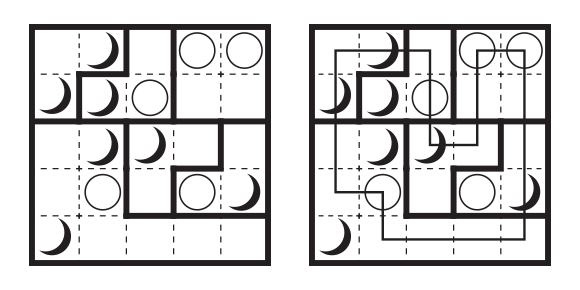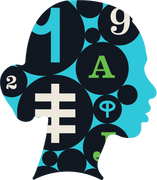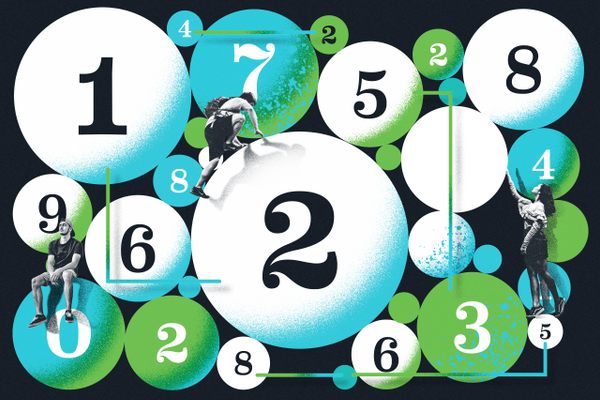
Puzzle Monday: Charting a Path Between Day and Night
Among our crosswords and other puzzles, we’ll be featuring logic challenges from Puzzle Communication Nikoli, a cult-favorite puzzle publication from Japan. A PDF of the puzzle, as well as the solution, can be downloaded below.
Sometimes the puzzles in Japan’s Puzzle Communication Nikoli, the most influential puzzle publication in history, are the result of true community collaboration. One puzzle inspires more as readers—and many of its puzzles are created by dedicated readers—tinker with a puzzle mechanic or put their own spin on it.
The puzzle called Moon-or-Sun was born in 2016, which makes it a relatively new addition to the Nikoli stable. One of the most common mechanics in Nikoli’s grid-based puzzles in the continuous loop, where solvers use a series of simple rules to navigate a path through a puzzle as if it were a maze. Taking the maze analogy one step further, readers created several puzzles in which the path had to pass through “rooms,” as if navigating a dungeon.

The first of these puzzles was called Okuni-meguri, or “Country Tour,” which employed number-based rules. It was invented by the prolific creator Gesaku, who also invented the popular Tentai Show. Many creator-authors saw potential in the idea and tried to improve on Okuni-meguri. But nothing really improved on the original until the creator known as Subaru Saito came up with the idea of using symbols instead of numbers—like lampposts or treasure chests in the imaginary dungeon. He started with three symbols, but the puzzles grew too complicated, so he scaled back to two. The puzzling essence felt more balanced and complete, according to Nikoli president and puzzle editor Yoshinao Anpuku.

The symbols could have been as simple as black and white circles, but Nikoli already had those in the Masyu puzzle and didn’t want to confuse readers. New puzzles in Nikoli, Anpuku says, should be recognizable at a glance. “If two symbols are a pair of opposites, it would be fun,” Subaru Saito says, and he came up with the sun and moon. Passing through rooms of day and night made the puzzle feel less like a dungeon and more like a trip around the world, and Moon-or-Sun was born.
Like many Nikoli puzzles, Moon-or-Sun involves drawing a continuous loop through a grid. The loop never crosses itself, branches off, or goes through the same cell twice. It passes through the centers of cells, but does not need to pass through every cell.

Each shape bordered by bold lines is called a “room,” and each room contains some combination of “moons” or “suns.” The line of your loop can only enter a room once and cannot return once it has left. In each room, the line must go through all of the moon cells or all of the sun cells, but cannot pass through both in a single room.
Once the line has passed through all the moons in a room, in the next room it has to go through all the suns, and vice-versa.
In the downloadable PDF below, you’ll find the instructions above, an example, and three puzzles of increasing difficulty.

Stumped? Download the solutions!











Follow us on Twitter to get the latest on the world's hidden wonders.
Like us on Facebook to get the latest on the world's hidden wonders.
Follow us on Twitter Like us on Facebook